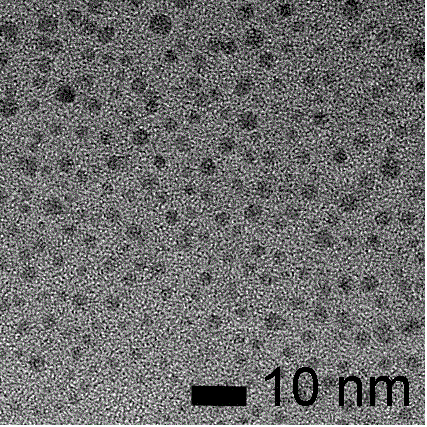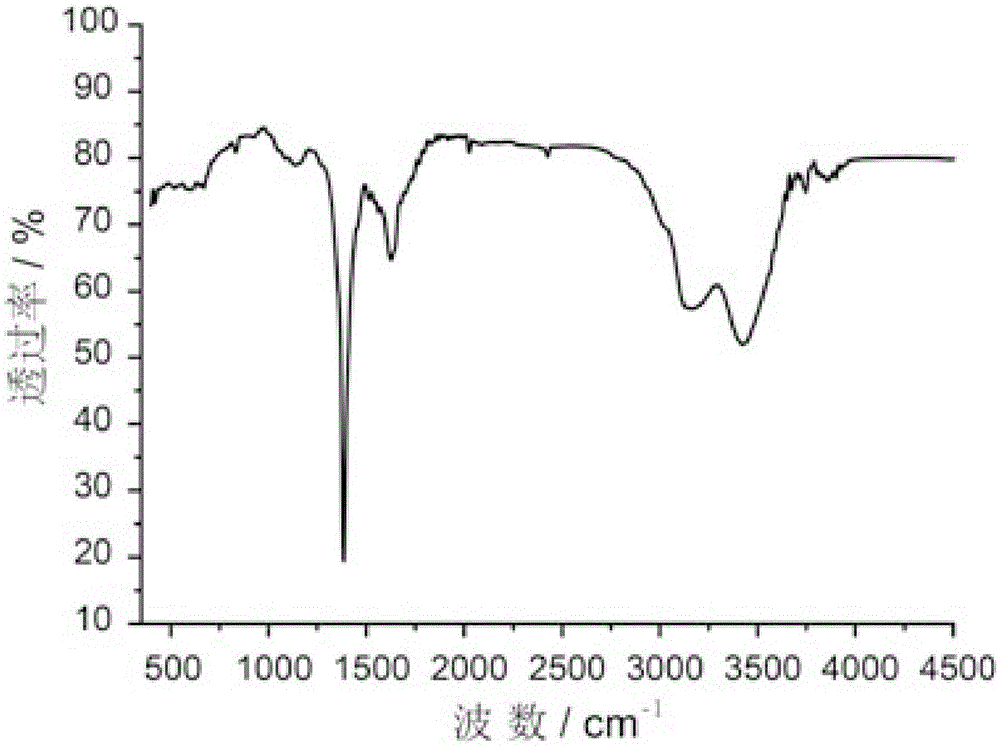Method for extracting fluorescent carbon quantum dots from semi coke
A technology of carbon quantum dots and blue carbon, which is applied in the field of extracting fluorescent carbon quantum dots, can solve the problems of complex processing procedures, expensive reagents, and difficult separation, and achieve the effects of high chemical activity, easy purification, and uniform particle size
- Summary
- Abstract
- Description
- Claims
- Application Information
AI Technical Summary
Problems solved by technology
Method used
Image
Examples
Embodiment 1
[0027] Add 0.1g of dried semi-coke powder to 100ml of 4M nitric acid and reflux at 100°C for 12h. After cooling down to room temperature naturally, centrifuge at a speed of 10,000r / min for 30min. Collect the supernatant to remove the precipitate and distill it under reduced pressure. The resulting supernatant was evaporated to dryness, and the black solid (about 1.105 g) obtained by evaporation was dispersed in water, neutralized to neutrality with a concentrated ammonia solution with a mass fraction of 37% to obtain a suspension, and then 10000r / min Centrifuge at a rotational speed for 30 min, collect the supernatant, dialyze the supernatant with a dialysis bag with a molecular weight cut-off of 0.5 kDa, collect the solution in the dialysis bag, and dry in vacuum at 60°C for 48 hours to obtain carbon quantum dots.
Embodiment 2
[0029] Add 5g of dry blue charcoal powder into 100ml of 6M nitric acid and reflux at 120°C for 36h. After naturally cooling to room temperature, centrifuge at a speed of 15000r / min for 60min. Collect the supernatant to remove the precipitate, and distill it under reduced pressure. The resulting supernatant was evaporated to dryness, and the black solid (about 1.105 g) obtained by evaporation was dispersed in water, neutralized to neutrality with a concentrated ammonia solution with a mass fraction of 37% to obtain a suspension, and then the speed of 15000r / min Centrifuge for 60 minutes, collect the supernatant, dialyze the supernatant with a dialysis bag with a molecular weight cut-off of 1 kDa, collect the solution in the dialysis bag, and dry it in vacuum at 80° C. for 24 hours to obtain carbon quantum dots.
Embodiment 3
[0031] Add 0.2g dry blue carbon powder to 100ml of 6M nitric acid and reflux at 100°C for 24h. After cooling down to room temperature naturally, centrifuge at 10,000r / min for 40min. Collect the supernatant to remove the precipitate and distill under reduced pressure The resulting supernatant was evaporated to dryness, and the black solid (about 1.105 g) obtained by evaporation was dispersed in water, neutralized to neutrality with a concentrated ammonia solution with a mass fraction of 37% to obtain a suspension, and then 10000r / min Centrifuge at a rotational speed for 40 min, collect the supernatant, dialyze the supernatant with a dialysis bag with a molecular weight cut-off of 3 kDa, collect the solution in the dialysis bag, and dry in vacuum at 60° C. for 36 hours to obtain carbon quantum dots.
PUM
| Property | Measurement | Unit |
|---|---|---|
| particle size | aaaaa | aaaaa |
| quality score | aaaaa | aaaaa |
Abstract
Description
Claims
Application Information
 Login to View More
Login to View More - R&D
- Intellectual Property
- Life Sciences
- Materials
- Tech Scout
- Unparalleled Data Quality
- Higher Quality Content
- 60% Fewer Hallucinations
Browse by: Latest US Patents, China's latest patents, Technical Efficacy Thesaurus, Application Domain, Technology Topic, Popular Technical Reports.
© 2025 PatSnap. All rights reserved.Legal|Privacy policy|Modern Slavery Act Transparency Statement|Sitemap|About US| Contact US: help@patsnap.com



